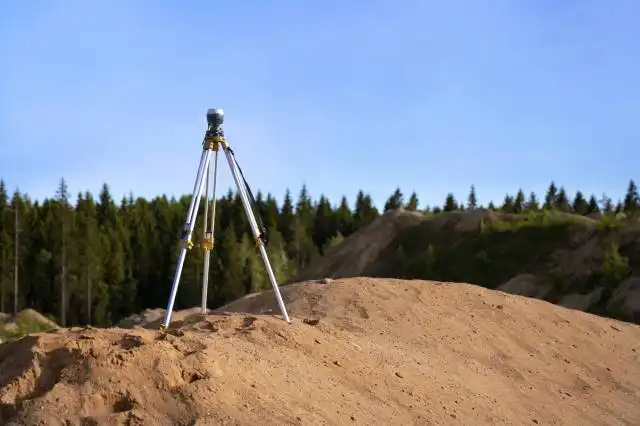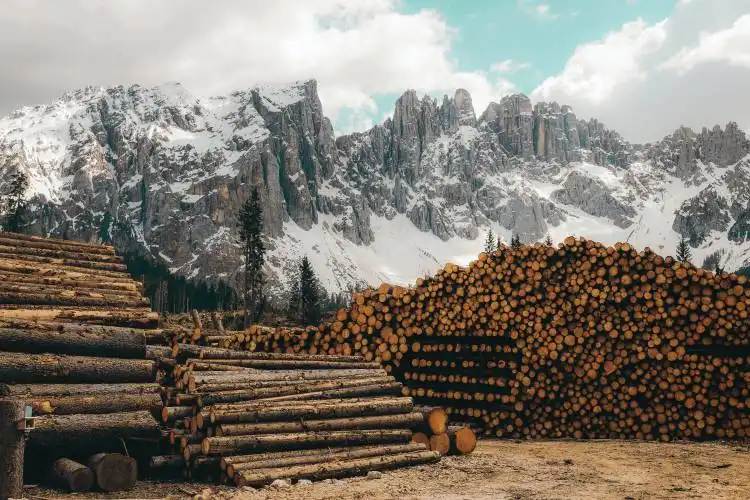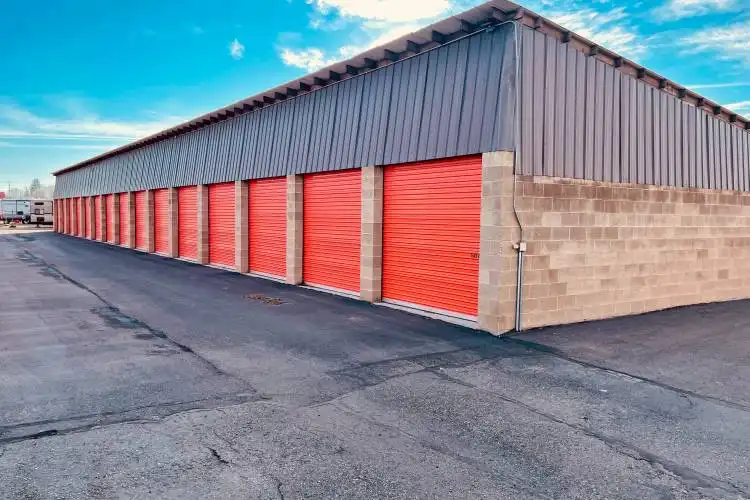Start a Gravel Pit Business
Unearthing Prosperity: Delve into the Lucrative World of Gravel Business
| Updated


GRAVEL PIT BUSINESS
Unleash your entrepreneurial prowess by digging into the Gravel Pit business - a venture as solid as the rocks themselves! The kernel of this enterprise lies in extracting and selling gravel, an essential raw material in construction work for projects like roads, buildings, or even landscaping. It's not all about dirt and hard work, it's about discovering the diamond in the rough world of construction supply. A word to the wise - strike while the bedrock is hot and layer your success, onestone at a time!
Jump to Business Plan
RELATED BUSINESS IDEAS
Browse ALL Construction & Real Estate Business Ideas
Discover Your Perfect Domain
Unlock the door to your online success with our hand-picked selection of premium domain names. Whether you're starting a new venture or rebranding an existing one, the right domain can set the tone for your digital presence. Browse through our curated list, each with its unique potential to enhance your brand's visibility and credibility.
GRAVEL PIT MINI BUSINESS PLAN
This a quick reality check to help you identify the strengths and weaknesses of your business concept before you dive in.
Expected Percent Margin:
- Gross Margin: 30-50%
- Net Profit Margin: 10-20%
Earnings Expectations:
- Daily Earnings: $400 - $800
- Weekly Earnings: $2,800 - $5,600
- Monthly Earnings: $12,000 - $24,000
- Annual Earnings: $144,000 - $288,000
Actions to Hit Those Numbers:
Mine Development and Equipment:
- Initial Investment: Capital costs largely depend on the scale of operations, but typically start from $500,000 for a small-scale operation.
- Equipment: Invest in efficient, high-capacity excavators, loaders, and trucks for large-scale operations.
Licensing and Permits:
- Permit Acquisition: Ensure you obtain all necessary permits and licenses for mining, may cost around $10,000 - $50,000 depending on the location.
Sales and Marketing:
- Sales Strategy: Build a sales funnel with construction companies, landscapers, and homeowners.
- Marketing: Invest around 5-10% of your expected gross revenue in marketing strategies including online ads, brochures, local newspaper ads.
Cost Control:
- Operational Costs: Prioritize efficient mining methods to save on costs. Fuel and machinery maintenance are a major component.
- Labor: Depending on size, expect labor to be around 10-30% of costs. Contracts should be with skilled, reliable operators.
- Insurance: Mining operations have significant liability insurance needs.
Business Operations:
- Hours of Operation: Operational hours are usually dictated by client demand and daylight hours. Typically, 5-6 days a week, 6-10 hours a day.
Please remember these are generalized estimations; actual figures can vary greatly. It's always best to conduct your own feasibility study and business plan.
NOT WHAT YOU HAD IN MIND? Here are more ideas



Browse ALL Construction & Real Estate Business Ideas
Grab Your Business Website Name
Before you get caught up in the whirlwind of setting up your business, invest in a domain name. It's a small but significant step that lays the foundation for your brand and makes it easier for customers to find and trust you. Just like you wouldn't build a house without securing the land first, don't build a business without securing your domain name.
"Why? Can't that wait?" Here's why it shouldn't
Step 1: Determine if Gravel Pit Business is Right for You
Breakdown of Startup Expenses
Before starting a gravel pit business, it is important to understand the startup expenses that will be incurred. These expenses can include the cost of land, the cost of equipment, the cost of permits and licenses, and the cost of labor. It is also important to factor in the cost of advertising and marketing, as well as any other expenses that may be associated with starting the business. Additionally, it is important to consider the cost of insurance and other related costs.
Breakdown of Ongoing Expenses
Once the business is up and running, there will be ongoing expenses that must be taken into consideration. These expenses can include the cost of labor, the cost of equipment maintenance and repair, the cost of advertising and marketing, and the cost of insurance. Additionally, it is important to factor in the cost of taxes, utilities, and other related costs.
Examples of Ways to Make Money
There are a number of ways to make money from a gravel pit business. One of the most common ways is to sell the gravel to construction companies, landscapers, and other businesses that need gravel for their projects. Additionally, the gravel can be used to make concrete, asphalt, and other materials that can be sold for a profit. Finally, gravel can also be used to make decorative items such as stepping stones, garden edging, and other items that can be sold to consumers.
Step 2: Name the Business
When naming a business, it is important to consider the name's ability to be memorable and to reflect the nature of the business. Additionally, it is important to make sure the name is available for use and is not already taken. It is also important to consider the domain name and social media handles associated with the name. A good name should be easy to spell, pronounce, and remember. It should also be short and catchy, and should not be too similar to another business name. Additionally, it is important to consider the target audience and the message the name should convey. Finally, it is important to make sure the name is legally available and not already trademarked.
Step 3: Secure Financing
When it comes to financing a gravel pit business, there are a few different sources of financing that can be explored. The most common sources of financing are loans from banks, private investors, and government grants. Banks are often willing to lend money to businesses that have a solid business plan and a good credit history. Private investors may be willing to invest in a gravel pit business if they are confident that the business will be successful. Government grants are also available for those who qualify. It is important to research all of these options to determine which one is the best fit for the business.
Business Plan
In order to secure financing, it is important to create a business plan. This plan should include a detailed description of the business, a financial forecast, and a marketing plan. It is also important to include a detailed budget that outlines the startup and ongoing expenses of the business. This budget should include the cost of equipment, labor, and materials. It is also important to include a plan for how the business will make money. This plan should include potential customers, pricing strategies, and any potential partnerships.
Documentation
In order to secure financing, it is important to have all of the necessary documentation in place. This includes a business license, a tax ID number, and any other necessary permits. It is also important to have a copy of the business plan and any other relevant documents. Having all of the necessary documentation in place will make it easier to secure financing.
Loan Application
Once all of the necessary documentation is in place, it is time to apply for a loan. It is important to research different lenders and compare their loan terms and interest rates. It is also important to provide the lender with all of the necessary documentation, such as the business plan and financial forecast. It is also important to be prepared to answer any questions that the lender may have. Once the loan is approved, the business can begin to move forward.
Step 4: Obtain Necessary Permits and Licenses
In order to start a gravel pit business, you must obtain the necessary permits and licenses from the local, state, and federal government. Depending on the location of the business, the requirements may vary. It is important to research the local, state, and federal regulations and requirements before starting the business. Additionally, you may need to obtain a business license, zoning permit, and other permits depending on the type of business you are running.
Environmental Impact Assessment
In addition to the local, state, and federal requirements, you may also need to obtain an environmental impact assessment. This assessment will help determine the potential environmental impact of the business and will help you determine if the business is feasible. The assessment will also help you determine the necessary steps to mitigate any potential environmental impacts.
Insurance
It is also important to obtain the necessary insurance for the business. This includes liability insurance, property insurance, and workers compensation insurance. This insurance will help protect the business from any potential legal issues or financial losses.
Financing
Finally, you will need to obtain financing for the business. This may include a loan from a bank or other financial institution, or you may need to seek out investors. It is important to research the different financing options and determine which option is best for your business.
Step 5: Find a Location
When choosing a location for a gravel pit business, there are several factors to consider. First, the location should be close to a major road or highway, as this will make it easier for customers to access the business. Additionally, the location should have access to a large amount of land, as this will be necessary for the gravel pit. The land should also be relatively flat, as this will make it easier to excavate the gravel. Finally, the location should have access to a large amount of water, as this will be necessary for the gravel pit operations.
Zoning Regulations
Once a location has been chosen, it is important to check the local zoning regulations to ensure that the gravel pit business is allowed in the area. Additionally, it is important to check the local environmental regulations to ensure that the gravel pit business is in compliance with all applicable laws. This will help to ensure that the business is able to operate without any legal issues.
Acquiring the Land
Once the zoning regulations have been checked, the next step is to acquire the land. This can be done by either purchasing the land outright or leasing it from the local government. Additionally, it is important to check with the local government to ensure that the land is not subject to any restrictions or easements. This will help to ensure that the gravel pit business can operate without any legal issues.
Obtaining Permits
Once the land has been acquired, the next step is to obtain the necessary permits. This will involve submitting an application to the local government and providing all of the necessary documents. Additionally, it is important to check with the local government to ensure that all of the necessary permits have been obtained. This will help to ensure that the gravel pit business is able to operate without any legal issues.
Step 6: Purchase Equipment
When starting a gravel pit business, there are several types of equipment that are necessary for the operation. This includes large excavators, dump trucks, bulldozers, and other heavy machinery. It is important to research the different types of equipment and decide which ones are best suited for the business. It is also important to consider the cost of purchasing and maintaining the equipment.
Where to Buy Equipment
Once the types of equipment needed have been determined, the next step is to find a place to purchase them. There are many different options available, such as online retailers, local dealerships, and auctions. It is important to compare prices and find the best deal. It is also important to consider the quality of the equipment and the reputation of the seller.
Financing Options
In addition to purchasing the equipment outright, there are also financing options available. This includes leasing, renting, and taking out a loan. It is important to research the different options and decide which one is best for the business. It is also important to consider the terms and conditions of the financing options and make sure that they are in line with the business’s goals.
Maintenance
Once the equipment has been purchased, it is important to maintain it properly. This includes regular servicing and repairs. It is important to research the different types of maintenance that are necessary for the different types of equipment and to create a maintenance schedule. It is also important to budget for the cost of maintenance and repairs.
Step 7: Hire Employees
When hiring employees for a gravel pit business, it is important to look for individuals who have experience in the industry, have a strong work ethic, and are willing to learn. It is also important to make sure that the employees have the necessary certifications and licenses required to work in the gravel pit. Additionally, it is important to look for employees who are able to work in a team environment and are able to take direction from the business owner.
Training
Once the employees have been hired, it is important to provide them with the necessary training to ensure that they are able to do their job safely and efficiently. This includes providing them with safety training, teaching them how to operate the equipment, and providing them with the necessary knowledge to work in the gravel pit. Additionally, it is important to provide employees with the necessary information about the company policies and procedures.
Benefits
When hiring employees, it is important to provide them with the necessary benefits. This includes providing them with health insurance, vacation time, and other benefits that will help to ensure that they are able to do their job effectively. Additionally, providing employees with benefits will help to ensure that they are loyal to the business and will help to retain them in the long run.
Pay
When hiring employees, it is important to provide them with a competitive salary that is commensurate with their experience and qualifications. Additionally, it is important to provide employees with bonuses and incentives for meeting certain goals or for completing certain tasks. This will help to ensure that employees are motivated to do their best work and will help to ensure that the business is successful.
Step 8: Market Your Business
Marketing your gravel pit business is essential to its success. You need to get the word out about your business and make sure people are aware of the services you offer. There are a few ways to market your business, including:
- Social media: Create accounts on popular social media sites such as Facebook, Twitter, and Instagram and post regularly about your business. Include photos of your gravel pit and the services you offer.
- Networking: Attend local business events and meet other business owners. This is a great way to make connections and spread the word about your business.
- Advertising: Place ads in local newspapers and magazines. You can also consider radio and television advertising.
- Word of mouth: Ask your friends and family to spread the word about your business. Offer discounts and incentives to customers who refer others to your business.
Develop a Website
Creating a website for your gravel pit business is a great way to reach a wider audience. Your website should include information about your business, such as the services you offer, pricing, and contact information. You should also include photos of your gravel pit and the products you offer. Additionally, you should have a blog where you can post regularly about your business and the services you offer. This will help you to build a following and establish yourself as an expert in the industry.
Step 9: Monitor Your Business
Monitoring your business is an important part of running a successful gravel pit business. It is important to track your expenses, profits, and customer satisfaction. This will help you identify areas of improvement and make changes to ensure your business is running as efficiently as possible.
You should also keep an eye on the competition and the market in general. This will help you stay ahead of trends and make sure you are offering the best products and services to your customers. Additionally, you should track customer feedback and reviews to ensure that you are providing the best possible experience to your customers.
Finally, it is important to stay up to date with the latest technology and trends in the industry. This will help you stay competitive and ensure that you are offering the best products and services to your customers. Additionally, it will help you stay ahead of the competition and ensure that your business is running as efficiently as possible.
EXPLORE MORE CATEGORIES
Browse ALL Business Idea Categories
TAKE THE NEXT STEPS










